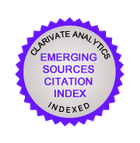1. Kobylyanskii V. D. Rye. Genetic bases of breeding. Moscow, Kolos Publ., 1982. 271 p. (in Russian).
2. Geiger H. H., Wilde P., Erfurt M., Pakas J. Heterosis of factoral inter-pool-single cross among elite winter rye inbred lines. Proceedings of the EUCARPIA rye meeting, July 4-7, 2001, Radzików, Poland. Radzików, 2002, pp. 19-22.
3. Geiger N. N., Miedaner T. Hybrid rye and heterosis. The genetics and exploitation of heterosis in crops. Madison, 1999, pp. 439-450. https://doi.org/10.2134/1999.geneticsandexploitation.c41
4. Kostov K. V., Goncharov S. V. Prospects of cereals hybrid breeding. Trudy Kubanskogo gosudarstvennogo agrarnogo universiteta = Proceedings of the Kuban State Agrarian University, 2016, no. 59, pp. 209-216 (in Russian).
5. Koren’ L. V., Orlovskaya O. A., Khotyleva L. V. Evaluation of impact of parents genetic divergence on heterosis of F1‑hybrids winter triticale. Vestsi Natsyyanal’nai akademii navuk Belarusi. Seryya biyalagichnykh navuk = Proceedings of the National Academy of Sciences of Belarus. Biological series, 2013, no. 1, pp. 30-36 (in Russian).
6. Ismagilov R. V. Peculiarities of formation of baking properties of winter rye grain. New methods for the selection of winter cereal crops: a collection of scientific papers [Novye metody selektsii ozimykh kolosovykh kul’tur: sbornik nauchnykh trudov]. Ufa, 2001, pp. 36-40 (in Russian).
7. Oberforster M., Marco G. Erfolgreich mit Roggen, Triticale und Winterweizen. Fortschr. Landmirt, 1998, no 18, pp. 25-31.
8. Arseniuk E., Oleksiak T. Rye production and breeding in Poland. Plant Breeding and Seed Science, 2003, vol. 47, no. 1-2, pp. 7-16.
9. Kobylyanskii V. D., Solodukhina O. V. Use of donors of valuable traits of plants in breeding of new varieties of winter rye. Dostizheniya nauki i tekhniki APK [Achievements of Science and Technology of AIC], 2015, no. 7, pp. 7-12 (in Russian).
10. Ponomarev S. N., Kudryasheva F. S. Heterosis in F1 winter rye hybrids obtained with the use of CMS. Nauchnotekhnicheskii byulleten’ Vserossiiskogo nauchno-issledovatel’skogo instituta rastenievodstva im. N. I. Vavilova. Vyp. 223. Genofond kul’turnykh rastenii dlya tselei selektsii [Scientific and technical bulletin of the All-Russian Scientific Research Institute of Plant Industry named after N.I. Vavilova. Iss. 223. Crop plant gene pool for breeding purposes]. St. Petersburg, 1992, pp. 24-26 (in Russian).
11. Ponomarev S. N. Heterosis in winter rye and the ways of its implementation. Aktual’nye problemy razvitiya prikladnykh issledovanii i puti povysheniya ikh effektivnosti v sel’skokhozyaistvennom proizvodstve: materialy mezhdunarodnoi nauchno-prakticheskoi konferentsii, Kazan’, 10-12 iyulya 2000 g. [Current issues of the development of applied research and the ways to improve their efficiency in agricultural production: materials of the international scientific-practical conference, Kazan, July 10-12, 2000]. Kazan, 2001, pp. 78-81 (in Russian).
12. Ponomarev S. N., Ponomareva M. L. Problems and prospects of winter rye breeding for heterosis. Voprosy selektsii, semenovodstva i tekhnologii vozdelyvaniya ozimoi rzhi v Rossii: tezisy dokladov Vserossiiskogo nauchno-metodicheskogo soveshchaniya [Issues of breeding, seed production and technology of winter rye cultivation in Russia: theses of reports of the All-Russian Scientific and Methodological Meeting]. Samara, 2000, pp. 41-42 (in Russian).
13. Goncharenko A. A., Ermakov S. A., Semenova T. V., Makarov A. V., Tochilin V. N., Sharakhov A. A. New varieties of winter rye. Vestnik semenovodstva v SNG [Bulletin of seed production in the CIS], 2001, no. 3, pp. 16-17 (in Russian).
14. Urban E. P. Winter rye in Belarus (breeding, seed production, cultivation technology). Minsk, Belaruskaya navuka Publ., 2009. 269 p. (in Russian).
15. Geiger H. H., Schnell F. W. Cytoplasmic male sterility in rye (Secale cereale L.). Crop Science, 1970, vol. 10, no. 5, pp. 590-593. https://doi.org/10.2135/cropsci1970.0011183x001000050043x
16. Gordei S. I. Selective and genetic aspects of using the heterosis effect in winter rye (Secale cereale L.). Vestsi Natsyyanal’nai akademii navuk Belarusi. Seryya biyalagichnykh navuk = Proceedings of the National Academy of Sciences of Belarus. Biological series, 2002, no. 1, pp. 103-108 (in Russian).
17. Hardzei S., Urban E. Prospects and problems of hybrid rye breeding in Belarus. Plant Breeding and Seed Science, 2003, vol. 47, no. 1-2, pp. 29-31.
18. Shlegel’ R. Hybrid breeding boosted molecular genetics in rye. Vavilovskii zhurnal genetiki i selektsii = Vavilov Journal of Genetics and Breeding, 2015, vol. 19, no. 5, pp. 589-603 (in Russian). https://doi.org/10.18699/VJ15.076
19. Goncharenko A. A., Ermakov S. A., Makarov A. V., Semenova T. V., Tochilin V. N., Krakhmaleva O. V. The study of the combining ability of the inbred lines of winter rye according to top-crossing method. Zernovoe khozyaistvo Rossii = Grain Economy of Russia, 2017, no. 5, pp. 1-8 (in Russian).
20. Madej L., Osinski R., Jagodinski J. Ocena plodnosci mieszancow zyta. Biuletyn Instytutu Hodowli i Aklimatyzacji Roslin, 1995, no. 195/196, pp. 283-290.
21. Melz Gi., Melz Gu., Hartmann F. Genetics of a male-sterile rye of “G-type” with results of the first F1 hybrids. Proceedings of the EUCARPIA rye meeting, July 4-7, 2001, Radzików, Poland. Radzików, 2002, pp. 43-50.



































